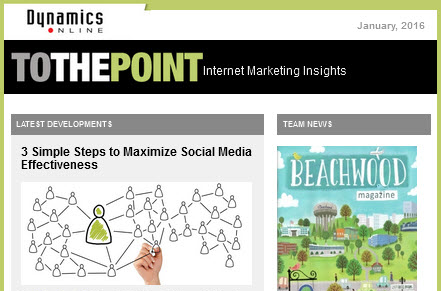5 Tips to Help Launch Your Content Marketing Strategy
Launching a new content marketing strategy can be a pretty overwhelming process for the uninitiated. You’ll get so far into it and realize your blog doesn’t have all the features you’d wanted, you don’t have an editorial calendar, you’re not posting on all your social platforms, you don’t have internal support, and you haven’t established Google Authorship yet. GAH!
Let’s take a step back and remind ourselves of a few key tenets of launching a content marketing strategy.
A solid content marketing campaign will normally run a couple months before you start seeing big returns. Any type of great success before that is likely either short-lived or dumb luck (that combination of preparation and opportunity, hopefully!). With content marketing, we’re trying to create a sustainable, long-term business model by producing high-quality content that will be valuable for years to come and help establish your organization as an industry thought leader.
Hopefully you’ve already done the preliminary work, like setting your goals, establishing your buyer personas and setting up metrics. Assuming that’s done, here are 5 quick tips to build upon the broader pieces of your content marketing strategy and help you launch a freaky good content marketing campaign.
1. Do Your Keyword Research
It’s one thing to know your buyer personas and their interests, quite another to know the specific terms they’re searching on the World Wide Web to find your product or service. Because while classifying buyer personas will show you geographic and demographic information, we often forget to delve a little deeper and know our audience so well that we know what words they’re typing into search engines.
And even beyond the surface-level discussion of keywords, we have to understand what words grab their attention while they read articles. What trends are important to them right now? What trends will be important to them six months from now? If you can meet your audience’s needs before they know they need it, you just got yourself a brand advocate or 50.
If you need some help getting started, check out CopyBlogger’s introduction to keyword research.
2. Utilize Visuals
Easily consumable information, fortunately or unfortunately, is one of the best ways to captivate your audience. Visuals like memes and infographics are a great way to engage users with your brand online. Even incorporating dynamic images into your blog posts so they generate on your Facebook page when you link to them can help drive more traffic than a simple text link could do on its own.
3. Have Content Mapped Out
If you don’t have an editorial calendar, drop everything and start putting it together. Your ed cal is what gives your content marketing strategy its legs so you’re not posting content inconsistently or with too disparate of messaging. There should be a connecting voice throughout the execution that guides your audience along and makes them comfortable. If your audience is going to buy anything from you, they need to feel that you are a trusted resource – an editorial calendar will help you establish this uniformity and consistency to continually drive your key audience down the sales funnel.
Not sure where to start in creating your editorial calendar? Here is a great guide with some downloadable ed cals at the end of the post.
4. Establish Google Authorship
Driving people through your sales funnel is a melting pot of tactics, but you have to make them feel comfortable by making it clear that your organization is run by humans and not unfeeling, insensitive, aren’t-moved-by-Bill-Withers robots. It’s becoming all about reputation, identity and social, according to Google, and Google Authorship will help push you in that direction.
Here is what a post with Google Authorship will look like in your search engine results:
(This guy obviously loves him some Bill Withers)
In addition to users being more inclined to click on a link that has an author associated with it, Google’s even admitted some hidden benefits to authorship, wherein if a user spends a certain period of time on an author-tagged search result, when they return to the search results page they will see a list of related articles written by that very same author.
Not sure how to establish Google Authorship? Check out Search Engine Land’s Definitive Guide to Google Authorship.
5. Ensure Your Content is Mobile-Friendly
Responsive Design has been a huge game-changer in 2013, and its street cred is destined to keep rising, with 40% of Internet usage already coming from mobile devices.
Responsive design lets companies display their website to custom fit any device – desktop computer, tablet, smartphone, and the next futuristic device Apple can conjure. No matter the size of your viewing pane, a responsive website will adjust accordingly and lose none of its integrity, while still being easily legible and navigable. Your content will lose none of its potency and encourage mobile users, through its ease-of-use, to utilize it as effectively as they would were they on their desktop.
Here’s an example of a responsive site we recently designed and launched.
In Summation…
These tips are meant to supplement your existing content marketing plan. If you’re looking for a more overarching guide on how to launch a full-fledged content marketing strategy, check out this curated post by the Content Marketing Institute: Developing a Content Strategy.
Remember: Google’s continual updates to increase the quality of search results should have little impact on your company’s content marketing strategy. Just keep producing high-quality content, and remember to always listen to Seth Godin.
Jeff Hirz is the Social Media and Content Marketing Manager at Dynamics Online.
You can reach him by calling (216) 292-4410.





